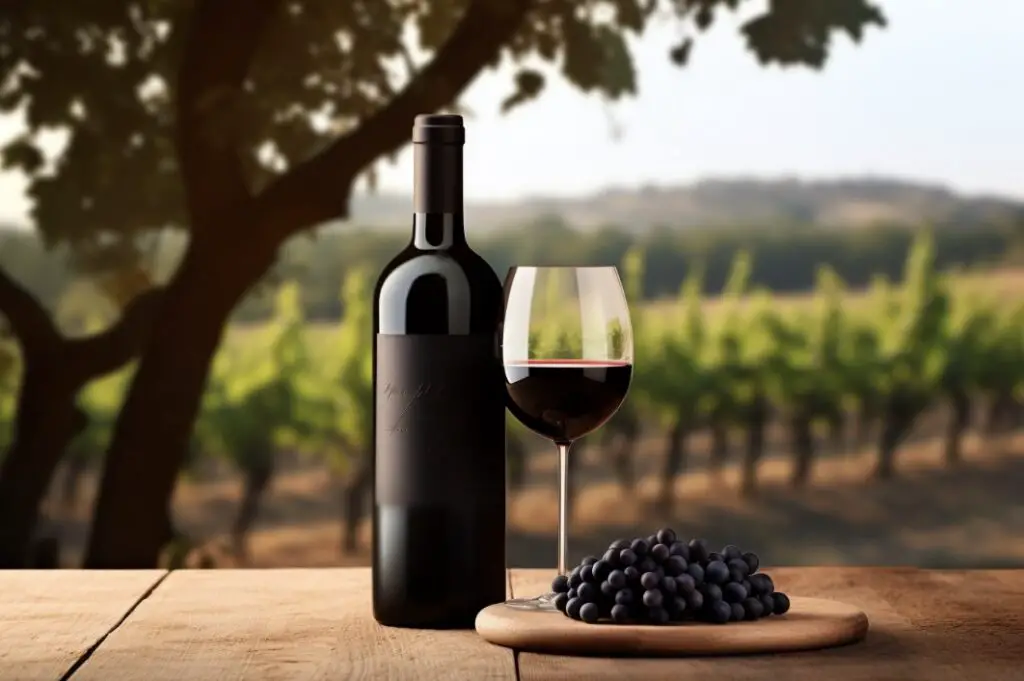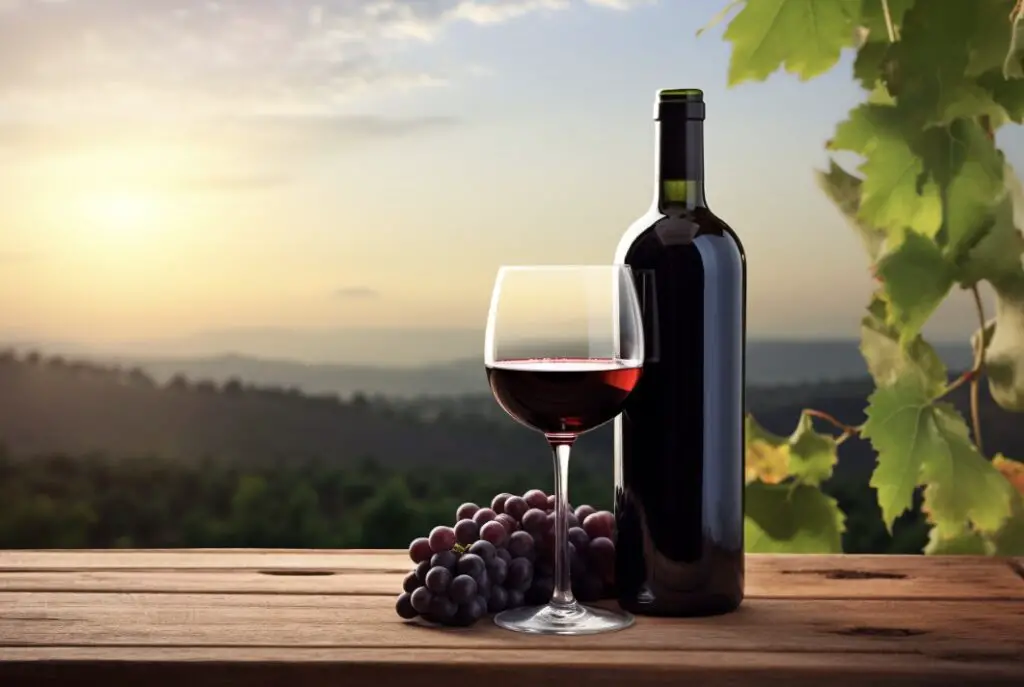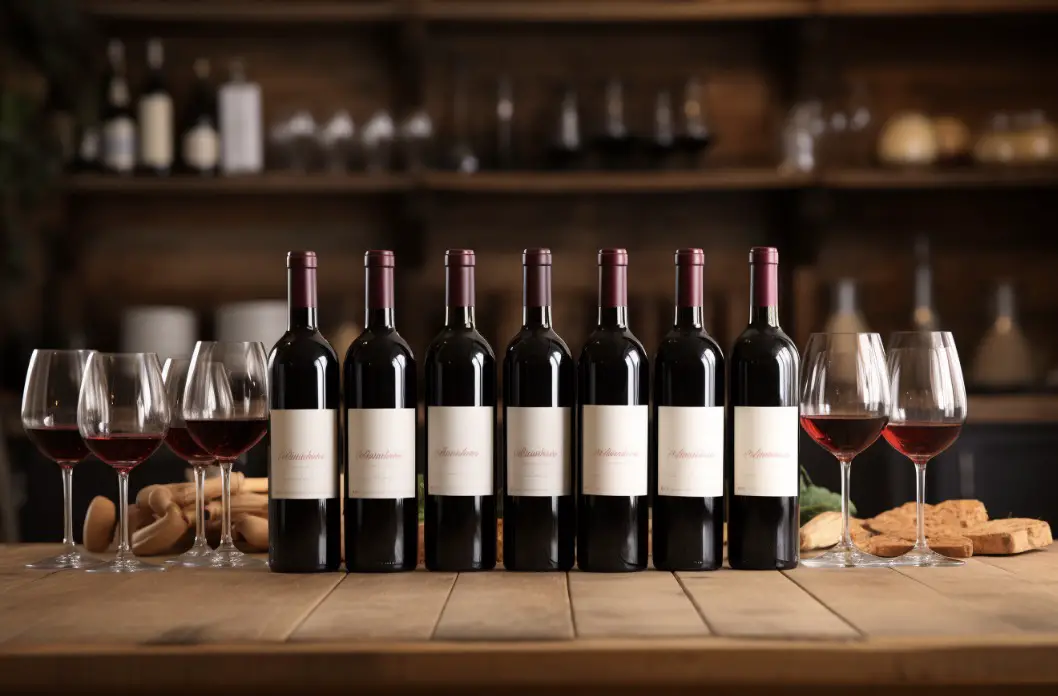Chianti, the quintessential Italian wine, has long been a favorite among wine enthusiasts for its versatility, affordability, and distinctive flavor profile. However, if you’re looking to branch out from this classic Tuscan red, there are several alternatives worth exploring.
In this blog post, we’ll introduce you to five wines similar to Chianti that are sure to please your palate. We’ll discuss:
1. Montepulciano d’Abruzzo
2. Barbera
3. Rioja
4. Côtes du Rhône
5. Carménère
For each wine, we’ll dive into its unique characteristics, taste profile, and how it compares to Chianti. Finally, we’ll wrap up with a conclusion and a personal recommendation.
1. Montepulciano d’Abruzzo
Origin and Characteristics
Hailing from the rugged Abruzzo region in central Italy, Montepulciano d’Abruzzo is made from the Montepulciano grape, which is not to be confused with the similarly named Vino Nobile di Montepulciano, made from Sangiovese grapes in Tuscany.

Montepulciano d’Abruzzo wines are known for their deep color, medium to full body, and relatively low acidity.
Taste Profile
On the palate, Montepulciano d’Abruzzo offers ripe black fruit flavors such as black cherry and blackberry, accompanied by hints of tobacco, leather, and earth. The tannins are typically softer and less pronounced than in Chianti, making for a smoother, more approachable wine.
Pros and Cons
Pros:
- Affordable and widely available
- Smooth, easy-drinking style
- Pairs well with a variety of foods
Cons:
- May lack complexity and depth compared to Chianti
- Less acidity may make it less refreshing
2. Barbera
Origin and Characteristics
Another Italian red worth considering is Barbera, which is primarily grown in the Piedmont region in northwest Italy. This grape variety produces wines that are juicy, fruity, and high in acidity.
Traditionally, Barbera was often seen as a more rustic and straightforward alternative to the region’s more famous Nebbiolo-based wines, such as Barolo and Barbaresco.
However, in recent years, many producers have been crafting more refined and complex Barbera wines that can rival their prestigious counterparts.
Taste Profile
Barbera is characterized by its vibrant red fruit flavors like cherry, raspberry, and strawberry, along with a bright acidity that makes it an excellent food wine. The tannins are usually soft, and there may be notes of spice, earth, and a touch of oak depending on the winemaking style.
Pros and Cons
Pros:
- High acidity makes it a great food wine
- Wide range of styles and price points
- Can be enjoyed young or aged
Cons:
- Less tannic structure compared to Chianti
- Can be overshadowed by more famous Piedmont wines
3. Rioja
Origin and Characteristics
Moving beyond Italy, another excellent alternative to Chianti is Rioja, a Spanish red wine made primarily from the Tempranillo grape. Rioja wines are known for their aging potential and distinctive flavors derived from oak aging.

The region’s classification system is based on the length of time spent in oak barrels and bottles, with terms such as Crianza, Reserva, and Gran Reserva indicating increasing levels of aging and complexity.
Taste Profile
Rioja wines typically showcase a mix of red and black fruit flavors, such as cherry, plum, and blackberry, alongside spice, vanilla, and leather notes from oak aging. The acidity and tannin levels can vary depending on the style and age of the wine but generally fall somewhere between Chianti and Montepulciano d’Abruzzo in terms of structure.
Pros and Cons
Pros:
- Rich, complex flavors from oak aging
- Wide range of styles and price points
- Excellent aging potential
Cons:
- Oak influence may be too pronounced for some palates
- Can be overshadowed by other Spanish reds, such as Priorat and Ribera del Duero
4. Côtes du Rhône
Origin and Characteristics
For a French alternative to Chianti, look no further than the Côtes du Rhône appellation in the Rhône Valley. This region produces a wide variety of wines, but the reds are typically blends based on the Grenache grape, often accompanied by Syrah, Mourvèdre, and other local varieties. These wines can range from light and fruity to rich and full-bodied depending on the specific blend and terroir.
Taste Profile
Côtes du Rhône reds often feature red and black fruit flavors such as raspberry, black cherry, and blackcurrant, along with spice, pepper, and herbal notes. The acidity is usually moderate, and the tannins can vary from soft to grippy depending on the blend and winemaking style.
Pros and Cons
Pros:
- Wide range of styles and price points
- Food-friendly acidity
- Approachable and easy to enjoy
Cons:
- May lack the distinctive character of Chianti
- Tannin levels can vary significantly
5. Carménère
Origin and Characteristics
Originally from Bordeaux, France, Carménère has found a new home in Chile, where it has become the country’s signature red grape. Often compared to Merlot, Carménère produces wines that are medium to full-bodied, with soft tannins and balanced acidity.
Taste Profile
Carménère is characterized by its ripe red and black fruit flavors, such as plum, blackberry, and cherry, along with a distinctive note of green bell pepper that sets it apart from other reds. Additional flavors can include spice, chocolate, and tobacco, depending on the winemaking style.
Pros and Cons
Pros:
- Unique flavor profile with distinctive green pepper note
- Soft tannins and balanced acidity
- Affordable and widely available
Cons:
- Green bell pepper flavor may not appeal to everyone
- Can be overshadowed by other Chilean reds, such as Cabernet Sauvignon and Merlot
Conclusion and My Personal Recommendation
Each of these five wines similar to Chianti offers a unique and delicious alternative for those looking to explore beyond the classic Tuscan red.
While all of these wines share certain similarities with Chianti, such as their food-friendly nature and approachable style, they also each offer their own distinct flavors and characteristics that make them worth discovering.
Personally, I would highly recommend Rioja as an excellent alternative to Chianti, due to its rich and complex flavor profile, aging potential, and wide range of styles available.
However, I encourage you to try each of these wines for yourself and find the one that best suits your taste buds and preferences. Cheers!
FAQs
What wine is similar to a Chianti?
A wine similar to Chianti would be a Sangiovese-based red wine from Italy. Some options include Brunello di Montalcino, Vino Nobile di Montepulciano, or Rosso di Montalcino. These wines share similar characteristics with Chianti, such as bright acidity, cherry flavors, and earthy undertones.
Is Chianti similar to Cabernet Sauvignon?
Chianti and Cabernet Sauvignon are quite different in terms of their characteristics. Chianti is an Italian red wine made primarily from Sangiovese grapes, known for its medium body, high acidity, and flavors of cherry, plum, and herbs.
On the other hand, Cabernet Sauvignon is a red wine originating from Bordeaux, France, but grown globally. It typically has a full body, higher tannins, and flavors of blackcurrant, black cherry, and sometimes mint. While both are red wines, they have distinct flavor profiles and come from different regions, making them unique in their own ways.
Is Chianti Classico Cabernet Sauvignon?
No, Chianti Classico is not made from Cabernet Sauvignon grapes. Chianti Classico is a red wine from the Chianti region in Tuscany, Italy, and it is primarily made from Sangiovese grapes. While some Chianti Classico wines may contain small amounts of other grape varieties, such as Canaiolo or Colorino, Cabernet Sauvignon is not a traditional grape used in Chianti Classico production.
Is Chianti Classico a Cabernet?
No, Chianti Classico is not a Cabernet. Chianti Classico is a red wine produced in the Chianti region of Tuscany, Italy, and is primarily made from the Sangiovese grape variety. Cabernet refers to Cabernet Sauvignon, a different grape variety commonly associated with Bordeaux wines.
What is the closest thing to a Chianti?
The closest thing to a Chianti would be other red wines from Tuscany, Italy, made with similar grape varietals such as Sangiovese. Some examples include Brunello di Montalcino and Vino Nobile di Montepulciano. These wines share similar characteristics and are often considered to be close relatives of Chianti.
Are Chianti and Merlot similar?
Chianti and Merlot are both red wines, but they are quite different in terms of their characteristics. Chianti is an Italian wine made primarily from Sangiovese grapes, known for its medium body, high acidity, and flavors of cherry, plum, and herbs. Merlot, on the other hand, is a French wine made from the Merlot grape, typically offering a medium to full body, moderate acidity, and flavors of blackberry, plum, and chocolate. While both are red wines, they have distinct taste profiles and are produced in different regions, resulting in unique expressions.




